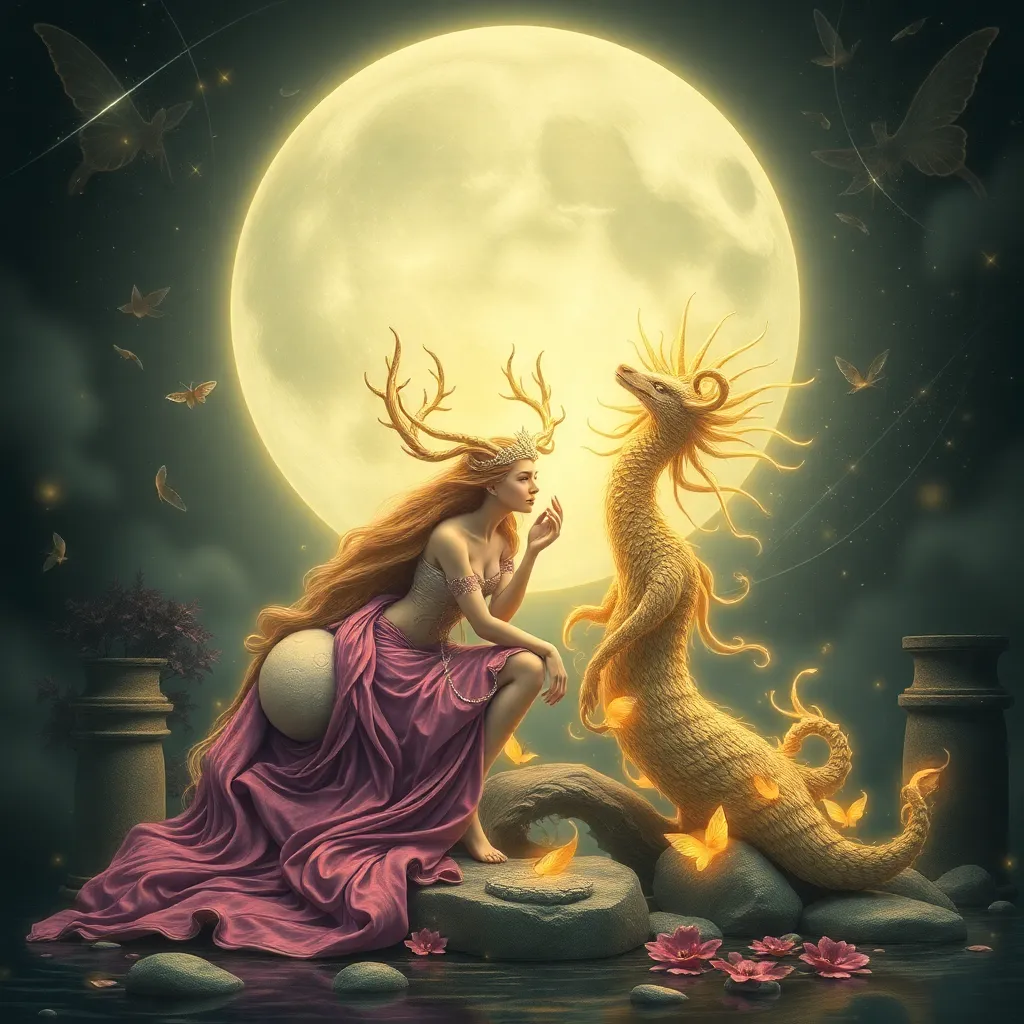Lamia and the Nymph: Examining the Differences and Similarities Between Two Nature Spirits
I. Introduction
In mythology, nature spirits play a vital role as manifestations of the natural world, embodying the elements, landscapes, and life forms within it. These entities often reflect the duality of nature—its beauty and its dangers. Among these spirits, Lamia and Nymphs stand out as two significant figures in Greek mythology, each with distinct characteristics and narratives.
This article aims to delve into the similarities and differences between Lamia and Nymphs, exploring their origins, physical characteristics, roles in mythology, relationships with mortals, themes of transformation, and their legacy in modern interpretations.
II. Origins and Mythological Background
Lamia’s origins in Greek mythology are steeped in tragedy. Originally a beautiful woman, Lamia was transformed into a monster by the goddess Hera, who was jealous of her affair with Zeus. This transformation marked Lamia as a figure of sorrow and vengeance, who preyed on the children of others in her grief.
Nymphs, on the other hand, have a more varied and rich background. They are often categorized into different types based on their habitats:
- Naiads: Water nymphs associated with springs, rivers, and lakes.
- Dryads: Tree nymphs, particularly those of oak trees.
- Oceanids: Sea nymphs, daughters of the Titan Oceanus.
Both Lamia and Nymphs hold cultural significance in ancient literature, representing different aspects of femininity and nature, with Lamia often embodying the darker side of desire and Nymphs symbolizing the nurturing and life-giving aspects of the natural world.
III. Physical Characteristics
Lamia’s physical appearance is often described as both enchanting and terrifying. Initially portrayed as a stunning woman, her transformation into a monster signifies her inner turmoil and rage. This metamorphosis into a serpent-like creature is a powerful representation of her loss of innocence and humanity.
Nymphs, in contrast, are typically depicted as ethereal and beautiful, embodying the grace of nature. Their representations vary widely, often influenced by the specific type of Nymph:
- Naiads: Often visualized as young women with flowing hair, often adorned with aquatic elements.
- Dryads: Typically shown with lush greenery and tree-like features, representing their close bond with the forest.
- Oceanids: Frequently illustrated with flowing gowns reminiscent of waves and seashells.
The physical attributes of both Lamia and Nymphs symbolize their connection to nature—Lamia’s monstrous form reflecting the destructive aspects of the natural world, while Nymphs’ beauty embodies its nurturing qualities.
IV. Roles and Functions in Mythology
Lamia’s role in mythology is that of a seductress and a tragic figure. Her connection to the underworld enhances her narrative as someone who draws in heroes and mortals, often leading them to their doom. She represents the dangers of unchecked desire and the consequences of jealousy and vengeance.
Conversely, Nymphs are seen as guardians of nature, nurturing the environment and guiding mortals. They often assist heroes on their quests, offering wisdom, companionship, and love. Their nurturing aspects highlight the positive relationship between humans and nature, emphasizing growth and protection.
The comparative analysis of their influence reveals:
- Lamia: A force of destruction and despair.
- Nymphs: A source of inspiration and healing.
V. Relationships with Mortals
Lamia’s interactions with heroes and mortals are steeped in tragedy and romance. Her relationships often end in sorrow, as her monstrous transformation leads to violent outcomes. The story of her relationship with Zeus, for instance, results in further tragedy as Hera’s revenge leads to Lamia’s curse of hunting children.
Nymphs, however, are typically portrayed as patrons and companions to mortals. They engage in love affairs with heroes, often offering guidance and mentorship. Their relationships are generally characterized by a sense of mutual respect and admiration, as they foster a connection with the natural world.
The consequences of these relationships illustrate a stark contrast:
- Lamia: Relationships often lead to tragedy and loss.
- Nymphs: Relationships tend to cultivate growth, love, and harmony.
VI. Themes of Transformation and Duality
The theme of transformation is central to Lamia’s story. Once a beautiful woman, her metamorphosis into a monster encapsulates the duality of her character—she becomes both a victim of circumstance and a perpetrator of horror. This transformation serves as a metaphor for the loss of innocence and the darker aspects of desire.
Nymphs embody duality as well, existing as both benevolent and capricious beings. While they can be nurturing and protective, they can also display mischievous tendencies, reflecting nature’s unpredictable character. This duality illustrates the complex relationship humans have with nature, which can be both life-giving and destructive.
VII. Legacy and Modern Interpretations
The influence of Lamia and Nymphs continues in contemporary literature and art. Lamia often appears in modern retellings of Greek myths, serving as a symbol of the consequences of jealousy and the complexities of femininity. Her story resonates in discussions about the societal treatment of women and the duality of beauty and monstrosity.
Nymphs have also evolved in modern culture, often portrayed as symbols of nature’s beauty and the feminine spirit. They inspire artistic representations, literature, and even environmental movements that highlight the importance of preserving nature.
Both figures remain relevant in today’s discussions about nature and femininity, representing the multifaceted relationships humans have with the natural world.
VIII. Conclusion
In summary, while Lamia and Nymphs both emerge from the rich tapestry of Greek mythology, their similarities and differences reveal much about the human experience with nature. Lamia embodies the darker aspects of desire, loss, and transformation, while Nymphs symbolize the nurturing, life-giving forces of the natural world.
Understanding these mythological figures is crucial as they reflect our perceptions of femininity and nature. The impact of Lamia and Nymphs continues to resonate, reminding us of the intricate relationships we forge with the world around us.



